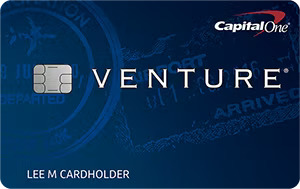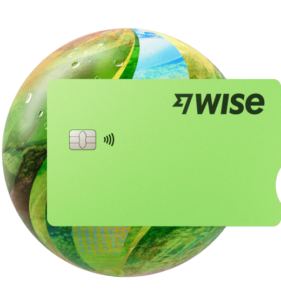Best Ways to Take Money Abroad in 2024
Got upcoming international travel? Whether you’re off on vacation, taking a work trip, visiting friends and family - or even moving overseas for the longer term - it’s important to know how to securely spend in foreign currencies. The good news is that there’s no right or wrong way of taking money abroad. It’ll all depend on your preferences, where you’re headed and how long you plan to be away.
Read on as we explore 4 possible ways to take money abroad, including their benefits and drawbacks, to help you pick the right way for you.
Best ways to spend money overseas
In this guide we’ll walk through 4 of the most practical and popular ways to take money abroad, including our top picks for providers to look at, pros and cons. Here are the common ways to pay overseas that we’ll investigate:
Prepaid travel cards to use abroad
Ideal for: adding money conveniently in USD, and converting between currencies anytime in an app, before spending and making withdrawals in the currency you need wherever you’re headed
Prepaid travel cards can be ordered online from a specialist service, or in some cases from a bank. Your card will be linked to a digital account so you can easily add money in USD, before switching over to the currency or currencies you need for your trip. Different cards have their own features - in some cases you can leave your money in dollars, and the card will just automatically convert to the required currency wherever you are at the point of payment. Other times you’ll need to switch over your balance to the currency or currencies you need to avoid extra costs when paying or making withdrawals.
For a flexible solution look at prepaid travel cards which support a broad selection of major currencies. If you also choose a card with no inactivity fee and no ongoing charges, you can keep the card after your first overseas trip, and the next time you’re planning on going abroad just top up again for convenient spending wherever you are.
Wise - good value prepaid travel card
With this card:
- Hold and exchange 40+ currencies in your linked Wise account
- No annual or monthly fees to pay, and no minimum balance requirement
- Currency exchange uses the mid-market rate with no markup
- Some free ATM withdrawals available every month
- Receive payments to your Wise account in multiple currencies conveniently
| Wise card pros | Wise card cons |
|---|---|
| ✅ Currency exchange uses the mid-market rate ✅ No foreign transaction fees apply ✅ Free to hold and spend 40+ currencies ✅ Receive payments to your Wise account in a selection of global currencies ✅ No minimum balance or ongoing fees | ❌ 9 USD fee to get a card in the first place ❌ Free ATM withdrawals are limited to 2 per month, to the value of 100 USD. Fees of 2% + 1.5 USD after that ❌ No branch network or face to face service |
Pros and cons of spending money abroad with a prepaid travel card
- Convenient for both spending and cash withdrawals
- Secure as not linked to your everyday USD account
- Many cards support a selection of major currencies so you can use them for lots of trips abroad
- Cards are often available with no ongoing fees to pay
- Currency exchange may have better rates than a bank will offer
- Less common foreign currencies may not be supported for holding and exchange
- ATM fees may apply, depending on the card you pick
- Some cards charge a fee if you spend in an unsupported currency, or if you spend a currency you don’t hold in your account already
Travel debit cards to use abroad
Ideal for: convenient spending and withdrawals when you’re overseas with travel friendly perks and no interest or late payment penalty fees
Travel debit cards vary a lot depending on the provider you pick - but they’ll be optimized for international spending and also often offer travel perks and benefits, like insurance or airport lounge access. You can also keep costs down in many cases with a card that has low or no foreign transaction fees.
The most flexible travel debit cards come with a multi-currency digital account which can hold and exchange dozens of currencies. You’ll need to load a balance before you spend - unlike with a credit card - but then your card will be accepted pretty much anywhere the network is supported internationally. Some cards have ongoing fees, but in many cases this does mean you get a suite of extra benefits in return.
We’ll go into more detail about our top pick for a travel debit card - Revolut - next.
Revolut - our pick for travel debit card
With this card:
- Hold and exchange 25+ currencies, free to spend currencies you hold
- Choose the account plan that suits your needs and spending, including some with no monthly fees
- Some fee free ATM withdrawals and currency exchange with the mid-market rate, based on the account tier you choose
- Extra perks like accounts for under 18s
- Travel benefits offered for some account plans
| Revolut card pros | Revolut card cons |
|---|---|
| ✅Hold and exchange 25+ currencies, spend currencies you hold for free ✅Choose from different account tiers to suit different customer needs ✅Get some free ATM withdrawals every month, depending on the plan you pick ✅Get some currency exchange every month which uses the mid-market rate - limits vary by account plan ✅No card order fee | ❌ Ongoing fees apply for some account tiers ❌ Out of hours fees push up currency exchange costs on the weekend ❌ ATM fees of 2% apply once you exhaust your free withdrawals |
Pros and cons of taking money abroad with a travel debit card
- Convenient and safe as you won’t need to carry a lot of cash at any one time
- Many cards come with linked accounts you can use to hold a selection of foreign currencies
- No interest or penalty fees - just top up the amount you want to spend and you’re done
- Not connected to your main USD account, adding a layer of security when you’re overseas
- Some transaction fees usually apply
- Not all foreign currencies are likely to be covered by all cards - check the currency or currencies you need are supported
- Some cards have monthly fees to pay to get full feature access
Taking cash abroad for travel
Ideal for: day to day spending where cards aren’t accepted - tipping, taking a taxi, shopping in a market - and for use in some foreign countries where cash is still very commonly used
How commonly cash is used varies greatly from one country to another. In some places card payments are accepted for pretty much anything - but in many others, cash is still king. As you might expect, developing countries where people may have more limited access to banking services commonly use cash far more than cards. However, it’s not a simple question of access to banking or the wealth of a nation. People in some very developed countries - like Japan - still prefer cash for a surprising proportion of payments, for example.
You’ll be able to learn more about how much cash is used in your destination with a little online research.
Generally, having some cash is a sensible move, if only as a back up plan for any time your card can’t be used. You can sort out your travel money at home before you travel if you like, or carry USD cash with you, and exchange it with money changers once you arrive. But it’s a balance - carrying a lot of cash at any one time isn’t great for security reasons, so usually taking a little, and using ATM withdrawals when you need more is a good choice. Plus, exchanging money in person will take precious time out either before you travel or while you should be enjoying your vacation - and you may struggle to find many exchange services in smaller towns and rural areas.
| Cash pros | Cash cons |
|---|---|
| ✅ Great for tipping, shopping in markets and other times only cash will do ✅ Convert in advance or take dollars and switch on arrival ✅ Set your budget in advance so you know exactly what you have to spend | ❌ Carrying a lot of cash isn't safe - tourists are often targeted by petty thieves ❌ You’ll have to invest time during your break or in advance, shopping round to get a good deal ❌ Exchange rates vary widely and usually include a markup - an extra fee
|
Do I need cash abroad?
Wherever you’re heading, you’ll probably want to have a little cash with you, for tipping and small purchases among other things.
A flexible and secure way to get cash - pretty much globally - is to use a prepaid card or travel debit card to make ATM withdrawals. Choose a card on a popular global network like Visa or Mastercard for the most available ATMs, and see if you can find a card you like which also offers low or no fees for currency conversion and ATM withdrawals.
How to buy the currency or currencies needed abroad?
You’ll usually be able to exchange a major currency like USD with physical money changing services found in major cities, tourist areas, airports and railway stations.
Bear in mind that you’ll need to check and compare the exchange rates and fees available before you switch your dollars for the currency you need. Some places which rely on passing trade, or which have little competition can add high fees into the rates available. Steering clear of airport and hotel exchange services is usually a smart plan if you have time to go to the city center instead.
How to buy foreign currencies in the US?
If you choose to, you can also often exchange USD to the currency you need in advance in the US. How easy this is will depend on where you’re headed, but major foreign currencies are held by a service like CXI which has 90+ US branches and also allows you to order whatever you need online for collection or delivery. Fees and exchange rate markups may apply, so do compare your options before you commit.
Best places to get cash overseas
There’s no single best place to get your travel cash - it’ll all depend on where you’re heading and how good a rate you can find either at home or on arrival. Compare a few options and bear in mind that it’s usually worth avoiding currency exchange in the airport or in your hotel.
Check our detailed guides on where to get foreign currencies in the US:
| How to get foreign currency in the US | ||
|---|---|---|
| 🇪🇺 How to buy Euros | 🇲🇽 How to buy Mexican peso | 🇬🇧 How to buy British pounds |
| 🇦🇺 How to buy Australian dollars | 🇨🇳 How to buy Chinese yuan | 🇯🇵 How to buyJapanese yen |
| 🇻🇳 How to buy Vietnamese dong | 🇧🇷 How to buy Brazilian real | 🇨🇭 How to buy Swiss Francs |
| 🇨🇦 How to buy Canadian dollars | 🇹🇷 How to buy Turkish Lira | |
Pros and cons of taking cash abroad
- Great for tipping, shopping in markets and other times only cash will do
- Convert in advance or take dollars and switch on arrival
- Set your budget in advance so you know exactly what you have to spend
- Carrying a lot of cash isn't safe - tourists are often targeted by petty thieves
- You’ll have to invest time during your break or in advance, shopping round to get a good deal
- Exchange rates vary widely and usually include a markup - an extra fee
Travel credit cards to use abroad
Ideal for: easy spending where cards are accepted, often with extra rewards when you spend overseas - plus sometimes only a credit card will do, such as when hiring a vehicle
Travel credit cards can be used as conveniently as any other credit card. The main difference is that they usually have specific features which make them good for overseas use, like extra reward points, cashback or miles when you spend in foreign currencies. Some cards also have low or no foreign transaction fees, discounts on travel bookings, or complimentary insurance.
Credit cards are handy if you want to spread the costs of your overseas trip. But bear in mind this will ultimately mean you spend more as interest fees will apply.
Generally, having a credit card with you when you’re abroad is a good option, even if you don’t use it that frequently. There are some times when you’ll be asked for a credit card as a payment guarantee, such as when you check into a hotel or rent a car. If you don’t have a handy credit card you might need to give a large sum of cash as guarantee instead, which isn’t good for your budget.
Capital One Venture Rewards - our pick for travel credit card
With this card:
- Check if you’ll be pre-approved online to get a card quickly
- 95 USD annual fee
- No foreign transaction or currency conversion fees
- Make ATM withdrawals overseas with relatively low 3% cash advance fees
- Earn rewards you can trade for travel benefits later

| Capital One Venture Rewards pros | Capital One Venture Rewards cons |
|---|---|
| ✅ No foreign transaction fees - your payment is converted to USD using the network exchange rate ✅ Earn rewards you can trade for travel benefits ✅ Repay your bill in full monthly to avoid interest or penalty fees ✅ Travel extras like some fee free insurance available | ❌ Cash advance fee of 3% or 3 USD (whichever is greater), plus interest, when making an ATM withdrawal ❌ Interest charges apply if you don’t repay your bill in full monthly ❌ Subject to eligibility and credit checks |
Pros and cons of spending with travel credit cards abroad
Pros:
- Earn rewards and discounts, or get travel perks - depending on the card you pick
- Spread your costs out over a few months
- Some cards have low or no foreign transaction fees
- Credit cards are useful as a payment guarantee in some situations
Cons:
- Interest and fees usually apply if you don’t pay back your bill immediately
- Cash advance and interest costs apply when using an ATM
- Eligibility rules apply
Travel requirements from the US when heading abroad
It’s important to know the travel requirements for the specific country or countries you’re going to. You’ll always need a valid passport, which may need to be valid for a further 6 or more months from the time you leave. But in some cases you’ll also need a visa, or proof of certain vaccinations, to be allowed to enter a country, cross a border or get on a flight.
Visa waivers are in place to allow limited tourist visits for US travelers to many countries worldwide. However, even where you don’t need a visa you might need to apply for an electronic visa waiver in advance. Bear in mind also that where a visa is needed it may not be an instant application process. Getting everything organized well in advance is essential. If you don’t have the paperwork needed to hand when you travel you may not even be allowed to board your plane.
Check the State Department’s ‘Before you go’ travel pages to learn more, including detailed advisories and information for US visitors. You can also sign up to the STEP program which allows you to highlight the countries you may travel to and get direct travel updates if there are any safety alerts issued.
Do foreign countries accept US dollars?
Generally you won’t be able to spend USD when you’re overseas. That means that if you’re carrying dollars with you you'll need to exchange them for the local currency wherever you are.
There are a few exceptions, including a handful of countries where USD is the official currency, or where USD is used alongside the local currency. As a major global currency, you may also find that individual merchants or tour operators are happy to accept USD payments in some places, particularly where the local currency is unstable.
Double check to see if USD is an official or commonly used currency where you’re headed, and bear in mind that if an individual merchant agrees to let you pay in USD, they’ll pick the exchange rate they want to use to convert their prices. This could include high fees. In most cases where this happens, paying in the local currency is a better bet.
Best currency to take abroad
If you’re planning on exchanging cash abroad you’ll be fine to carry USD in clean and undamaged notes. However, you’ll need to double check the currency or currencies you need if you’re going to exchange in advance of travel.
Best ways to take money to Europe 🇪🇺 | Best ways to take money to Japan 🇯🇵 | Best ways to take money to Italy 🇮🇹 | Best ways to take money to Bali Indonesia 🇮🇩
Top travel money tips abroad
Here are a few final tips to help your money go further while you’re away:
- Double check the currency you need for each destination you’re visiting, there are close to 180 different currencies in use abroad!
- Have several different payment methods in case one isn't accepted wherever you are
- Get a travel money card before you leave to make it easier and cheaper to spend and withdraw abroad
How much money do I need per day abroad?
Setting your travel budget can be tricky. Prices vary widely for hotels, travel, attractions and food. However, you’ll be able to get useful information online to help you work out how much you might need to spend to have the trip of your dreams.
A good place to start your research and to get more detailed cost information by country and city, is from a site like Numbeo.com. Numbeo aggregates pricing data from people living in thousands of cities globally, so you can easily see how much things are likely to cost wherever you’re headed, and plan your budget.
Conclusion: What is the best way to take money on holiday abroad
The best way to take money abroad is going to vary a lot depending on where you’re going and what you plan to do.
In fact, for most people, having several different ways to pay while you’re overseas makes sense. That way you’ll have a back up plan if one payment method isn’t accepted, or in the nightmare scenario that one of your payment cards is lost or stolen.
Consider getting a travel card - such as a prepaid travel card from Wise or a travel debit card from Revolut - to convert currencies, spend and make withdrawals. You can also pack your regular debit or credit card for emergencies, and a little cash. If you have cards which have been issued on different networks this approach can be even more effective, as some card networks which are popular in the US like Discover and Amex aren’t as commonly used globally.
Use this guide to decide which option to take money abroad will work best for you, based on your own preferences and needs.
FAQs - Best ways for travel money
Should I exchange money before I travel abroad?
You won’t necessarily need to exchange money before you travel - making a cash withdrawal at an ATM on arrival in your destination can also work well, and may be better value overall if you have a travel card from a provider like Wise or Revolut. If you’d prefer to carry cash when you leave, shop around to find the best exchange rates for the currency or currencies you need. Learn more: Best ways to buy foreign currency for travel
Can I withdraw foreign currencies from a local ATM?
You can’t withdraw any foreign currency at a normal ATM in the US, but you’ll be able to get the local currency wherever you are on arrival easily. Use a travel card and your withdrawal may even be free. Learn more: How to avoid international ATM fees
Are prepaid travel cards a good way to take money abroad?
Travel prepaid cards from services like Wise have some great features like multi-currency balances and low or no ATM fees. They can also be a safe way to spend when abroad - consider getting a travel prepaid card to use alongside your other preferred payment methods, to bring down the costs of your trip.
Can I use cash abroad?
Yes. It’s unusual - although not unheard of - to find places where you can’t use cash. Having some cash in local currency, and a travel card, is a good way to make sure you’ll be able to pay no matter what happens.


